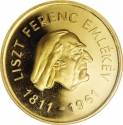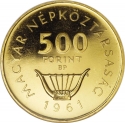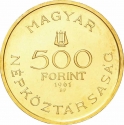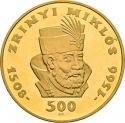You are about to finish your registration. Please check your mailbox (including spam folder). There should be a letter with a confirmation link. Check setting to make sure that your e-mail address is correct.
Send letter againDescription
Stephen I (c. 975 – 1038), known as King Saint Stephen, was the last Grand Prince of the Hungarians from 997 to 1000 or 1001, and the first King of Hungary until his death in 1038. Born around 975 in Esztergom, he was baptized with the name Vajk. Stephen married Gisela of Bavaria, and after ascending to the throne, he faced challenges from his relative Koppány, whom he defeated with the help of foreign knights and native lords. Crowned in 1000 or 1001, he expanded his kingdom by unifying the Carpathian Basin and defending against invasions, establishing church institutions and local administration systems. His reign brought peace and prosperity to Hungary, making it a key route for pilgrims and merchants. Stephen died at age 62 or 63, buried in Székesfehérvár. Canonized by Pope Gregory VII in 1083, he is celebrated as a national saint in Hungary, with his feast day observed on 20 August, also known as State Foundation Day.
Engraver: Lebó Ferenc
Obverse

|
Depicts King Saint Stephen and Queen Gisela. King Saint Stephen is portrayed wearing a lily crown and a cloak, holding a lance and an orb, with the Latin inscription "King Stephen" around his head. Queen Giselle is depicted wearing a lily crown and a cloak, holding a stylized church, with the Latin inscription "Queen Gisela" around her head. All images are surrounded by the Latin inscription "King Stephen of Hungary" above and the death year of King Saint Stephen. STEPHANUS + REX + HUNGARIAE † 1038 + |
|---|---|
Reverse

|
Depicts the first Hungarian coin, St. Stephen's denar (Lancea Regis), the denomination, the mintmark (BP), the issue year and the engraver's name below, surrounded by the country name (Hungarian People's Republic). MAGYAR |
| Edge |
500 Forint
People's Republic
950th Anniversary of Death of King Stephen I
KM# 662 Schön# 162 Adamo# EM102
950th Anniversary of Death of King Stephen I









